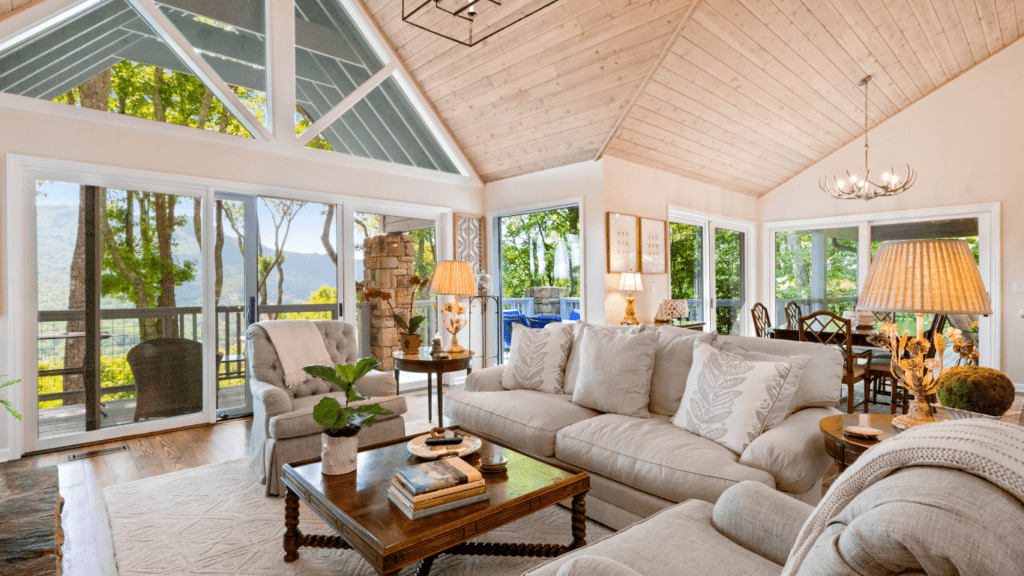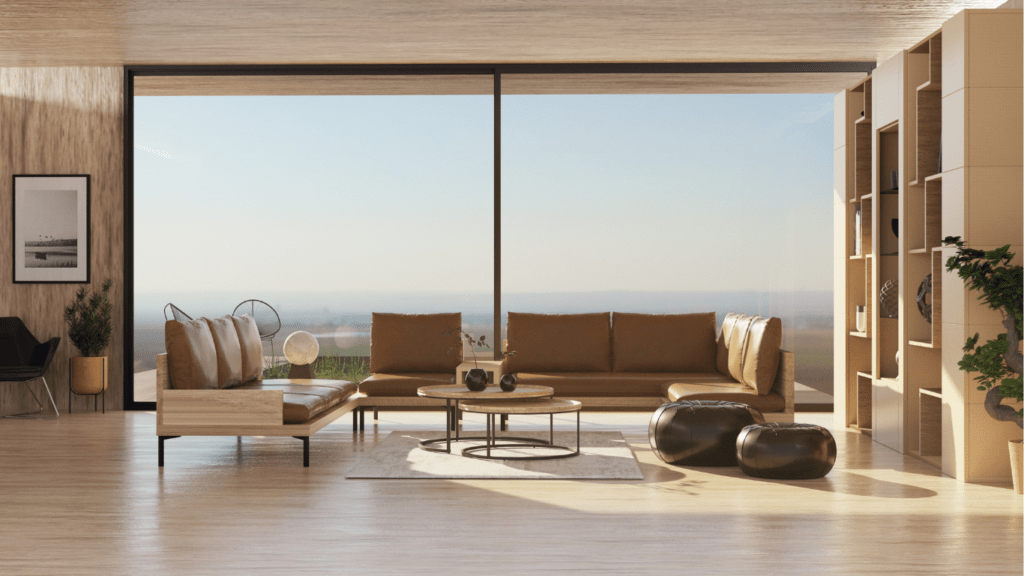Start With the Flow
Creating a space that feels natural and functional starts with one of the most overlooked design principles: traffic flow. While symmetry can be visually pleasing, it shouldn’t come at the expense of how people navigate the room. Prioritizing clear pathways will improve both comfort and functionality.
Why Traffic Flow Matters More Than Symmetry
A room that looks balanced but feels hard to move through won’t inspire relaxation or usability.
Clear, intuitive movement from one area to another enhances the daily experience of the space.
Prioritizing flow helps ensure that furniture supports your lifestyle, not just your layout.
How to Map Walkways
Use painter’s tape or rugs to outline natural walking paths before finalizing placement.
Aim for a minimum of 24 to 36 inches of open space in high traffic areas like between sofas and coffee tables or around entry points.
Consider how someone might walk from the doorway to the window, or from one seat to another, and adjust accordingly.
Avoiding the “Push to the Walls” Trap
Many homeowners make the common mistake of arranging all furniture against walls, thinking it maximizes space. In reality, this can make rooms feel awkwardly empty in the center and discourage interaction.
Pull seating inward to create defined conversation zones.
Allow for breathing room between the windows, doors, and furniture edges.
Float pieces like sofas or reading chairs near the center to better manage flow while still making the most of open areas.
Creating thoughtful traffic patterns gives your space a sense of intentionality resulting in a room that looks good and lives even better.
Respect the Light
Natural light is one of the biggest assets in any room but misuse it, and you’ll pay for it in glare, sweat, or an overheated sofa. The key is finding balance. Don’t shove furniture directly into the sunniest patches unless it’s built to handle it. Think breathable fabrics like cotton and linen for sun facing zones, and keep to lighter finishes that won’t warp or fade easily.
Screen time? Avoid placing devices where light comes in at a direct angle unless you like squinting or rearranging mid call. Instead, angle desks or seating just off to the side of windows. Same goes for couches or reading chairs. Let them catch ambient light, not direct hits.
You want the space to feel bright, not blinding. Sheer curtains or adjustable blinds give control when the sun shifts. And if you’re still unsure where things should go, check out this rundown on smart placement near windows. It breaks down the trickiest setups with simple, workable ideas.
Anchoring Around Doors

Doors can wreck a furniture layout if you’re not paying attention. The key is working with the room’s bones, not fighting them. Leave clear paths about 30 to 36 inches is ideal to let people come and go without side stepping furniture. Full swinging doors? Make sure nothing’s in the line of fire. Even pocket or sliding doors need breathing room.
Got a room with two or three entry points? Avoid placing dominant pieces like sofas or tall bookshelves right in the traffic zones. Think float over block. Try anchoring furniture off to one side, or using a corner layout to open up access across multiple paths. It keeps the space connected instead of chopped in pieces.
Furniture choice matters here. Narrow consoles can hug the wall without getting in the way. Open leg chairs give visual lightness and physical legroom. Storage benches near an entry pull double duty: practical, low profile, and won’t crowd the zone. The goal is simple respect movement, don’t box people in.
Zoning Without Walls
Open layouts are great until they feel like a furniture free for all. The fix? Subtle zoning. Rugs are a power move here. One rug under your sofa setup tells the brain, “This is the hangout zone.” Same with lighting. A pendant light above a small dining table creates an instant room within a room. Use modular furniture to your advantage too benches, nesting tables, or movable screens add structure without bulk.
When placing conversation areas near windows or doors, aim for balance not blockage. Leave at least a few feet of clearance where possible, and angle chairs or sofas slightly to invite both light and movement through the space. Corners by windows are prime real estate for armchairs or small seating nooks natural light makes them warm, and it helps open the scene visually.
For small spaces, the trick is focus. Too many focal points make a room feel crowded. A thoughtful rug, cohesive lighting, and a few purposefully placed pieces go further than overstyling ever will. Keep it light, keep it flowing.
Need more pointers? Check this out: placement near windows.
Final Touches That Make It All Work
The room might function well, but if it feels off balance visually, the job isn’t done. Balance doesn’t mean symmetry it means both sides of the space have visual weight, even if the pieces are different. A low credenza on one side might need a tall plant or floor lamp nearby. A chunky sofa can be offset with layered artwork or a heavier mirror.
Art and mirrors work best when they’re intentional, not filler. Avoid the urge to cover every wall. One strong piece, properly scaled, does more than three small ones scattered around. Storage items like shelves or closed cabinets can also help frame a wall without adding clutter just keep surfaces about 70% clear to avoid visual noise.
When it comes to choosing pieces, know your limits. Custom furniture can be a smart move if nothing fits a tough layout, especially in older homes where windows or doors hijack wall space. Otherwise, flexible pieces like nesting tables, modular shelves, or transformable seating give you room to adapt as the space evolves.
A well composed room doesn’t draw attention to any one thing it just feels right. That’s the goal.


 Betsylie Sheetsin – Home Renovation Expert
Betsylie Sheetsin serves as the Home Renovation Expert at Castle Shelf House, specializing in giving practical advice for both small and large-scale home improvements. With years of experience in construction and renovation, Betsylie understands the importance of blending durability with design. Her insights into home renovation projects, along with expert advice on the latest materials and techniques, empower homeowners to tackle even the most ambitious projects confidently.
Betsylie Sheetsin – Home Renovation Expert
Betsylie Sheetsin serves as the Home Renovation Expert at Castle Shelf House, specializing in giving practical advice for both small and large-scale home improvements. With years of experience in construction and renovation, Betsylie understands the importance of blending durability with design. Her insights into home renovation projects, along with expert advice on the latest materials and techniques, empower homeowners to tackle even the most ambitious projects confidently.
